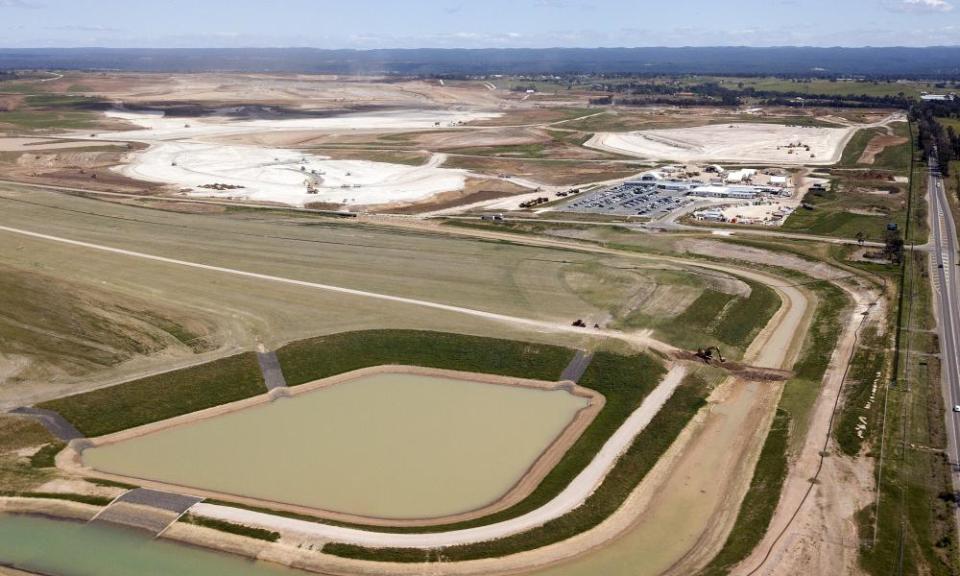From boom to despair: Sydney's west to suffer Covid symptoms 'for generations'
Before the coronavirus outbreak, there was a sense that western Sydney – despite its challenges – was on the up. With a booming population, it had become the third-biggest economy in Australia, trailing only the Sydney CBD and Melbourne.
And with an international airport on the way and plenty of infrastructure spending by the state government, there was optimism it would continue to generate jobs and economic growth.
Its population growth has outpaced Sydney as a whole every year for the past six years. That made it an economic engine, fuelling population-serving industries such as construction and retail. But the growth had a hidden weakness: the labour market.
And now the pandemic has exposed just how vulnerable the region really is, Prof Phillip O’Neill, director at the Centre for Western Sydney, says.
Related: Australia's jobless to face mutual obligation rule despite few job vacancies
The centre’s report, “Where are the jobs?” details some of the challenges.
“The weaknesses in the labour market will be the hurdles you’ll need to overcome coming out [of Covid-19],” O’Neill says.
“To some extent, the western Sydney problem has galloped away from us. It’s a combination of many failures. At the core of the failure is the unwillingness to genuinely generate high concentrations of jobs in the region.”

Construction, retail and hospitality nosedive
With a dependence on industries such as construction, retail and hospitality, western Sydney could double the national unemployment figure as those sectors’ nosedive.
“Some sub-regions in western Sydney are likely to experience unemployment at double national rates or more, and these are likely to persist long after a national economic upturn,” O’Neill says.
Elfa Moraitakis, chief executive of SydWest Multicultural Services, says: “More and more people [in western Sydney] will be reliant on Centrelink … And we’ll be going back to increasing rates of people living below the poverty line.”
The centre’s report attributes much of the job growth before the pandemic to “population-driven” industries. If population growth slows, the industries will face a downturn.
The jobs deficit number is rising and this occurs at the end of a record jobs boom in western Sydney
Prof Phillip O’Neill
“Western Sydney’s record population growth rates are likely to be reined in as a consequence of the Covid-19 pandemic, meaning likely slowdowns in jobs growth in the population-driven sectors,” it says.
It singles out construction, which was the largest source of local jobs in the years leading up to 2018: “The construction sector, where a bust follows every boom, has already commenced significant downturn.
“So the sidelining of the construction sector and the population-driven sectors leaves the region’s growing labour force vulnerable to severe and prolonged experiences of unemployment.”
These industries also make for unstable employment, short-term jobs that don’t have the flexibility or potential of professional jobs.

“These typically are the lowest-paid jobs and those that require people to have the least level of skilling,” O’Neill says.
“There are insufficient jobs for the number of resident workers. The jobs deficit number is rising and this occurs at the end of a record jobs boom in western Sydney.”
Long-term effect
Moraitakis’ organisation works mostly with migrants and refugees and she says it is already tough for jobseekers.
Local businesses had been hit hard: “They had already reduced staffing hours, and some of these businesses had already closed. And they’re probably still closed.
Transport has always been an issue
Elfa Moraitakis
“Recruitment had completely stopped [and] they had no plans on recruiting any new employees due to the loss of income they had already experienced.”
The same goes for retail and hospitality, which O’Neill says aren’t the kinds of high-paying, permanent jobs that can sustain a growing economy.
For those with higher education qualifications, work within their field is hard to find close to home.
O’Neill says although the number of professionals in western Sydney had skyrocketed, most had to leave to find work.
Related: Jobseeker's rise has kept millions out of poverty. It must remain raised | Greg Jericho
Transport bottleneck
As the sector grows in western Sydney, so too will a potential commuting nightmare, he says.
It means people have to leave the region in droves every day for work with congestion and accessibility undermining any improvement to local jobs.
Those who cannot make a daily commute are forced to find work locally, creating a jobs bottleneck that was barely keeping up before the pandemic.

Moraitakis says: “Transport has always been an issue.”
The report predicts that by 2036 there could be more than half a million workers leaving the area every day.
“That’s a daily nightmare,” O’Neill says. “We don’t have the infrastructure to get those people to work. It’s unsustainable, both from an environmental and social point of view.”
Pockets of deprivation
The reports also discuss why some areas in western Sydney seemed immune to job growth even before the pandemic.
“Western Sydney’s poor neighbourhoods remain one of Australia’s most serious social and economic issues,” the report says.
“These areas have among the highest levels of socioeconomic disadvantage in Australia with evidence of joblessness that has become intergenerational.”
O’Neill says the persistence of unemployment reflects a failure in policy: “Market forces cannot remove that unemployment problem.
“We need to have a return to systematic training and job placement for those segments of the population who are unable to compete for the dwindling supply of jobs in the unskilled labour market.”
Moraitakis, however, thinks the region can bounce back better than previous recessions.
“I think that this time around it might be a little easier … but it’ll have an impact for generations,” she says.

 Yahoo Finance
Yahoo Finance 